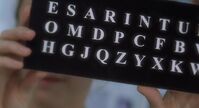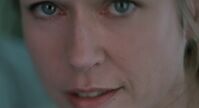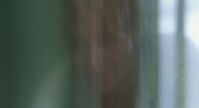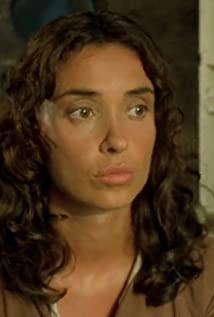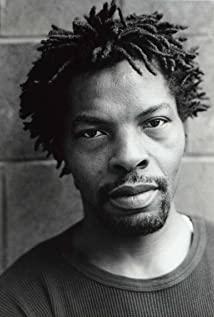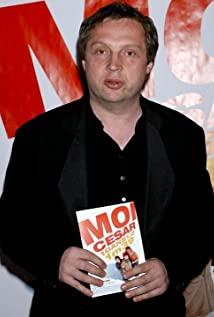The picture
is a movie with a strong sense of picture. The graffiti-like expression is full of spirituality, which makes you completely immersed in your own spiritual world. The unrestrained fantasy and butterfly-like thinking no longer require logic, dreams and reality. There are no longer clear boundaries. When it comes to the picture, first of all I would like to introduce the neo-expressionist painting and the film's director Julian Schnabel.
Expressionism Painting
Expressionism refers to a trend of thought that emphasizes expressing the artist's subjective feelings and self-feelings in art, which leads to exaggeration, deformation and even grotesque processing of objective forms. The objectivity of the real world is opposed to the purpose of art. It is an artistic trend in the field of painting in the early 20th century, which was especially popular in the Nordic countries. It is a reflection of the social and cultural crisis and spiritual chaos. .
Expressionism has long existed in the traditional art of the Nordic countries: it can be seen in the works of early Germanic barbarian art, medieval Gothic art, and the works of painters such as Booz and Bruegel in the Renaissance. The deformed and exaggerated images and the absurd artistic effects of the pictures all show a strong tendency of expressionism.
At the end of the 19th century, there appeared the first expressionist movement in which the influence of symbolism and modern style were mixed. The pioneer representative painters were the Dutch Van Gogh, the French Lautrec, the Austrian Klimt, and the Swiss Hoder. Le and the Norwegian Munch, they express their subjectivism through some erotic and tragic subject matter.
The main base of 20th century Expressionism was Germany, which was determined by German social reality and influenced by Nietzsche's philosophy of subjective idealism, Freud's psychoanalytic theory and Steiner's mysticism.
Neo-Expressionism (New-Expressionism)
The so-called Neo-Expressionism is a new school that started in Germany in the late 1970s and early 1980s. Of course, it is not a simple repetition, nor a mechanical imitation. As a reaction to Pop Art and Minimalism, Neo-Expressionism aims at expressing itself, and shows a tendency to return to Expressionism at the beginning of this century in terms of picture, brushwork, and mood. They are different in terms of artistic ideas, subject selection, and expression techniques. Neo-Expressionism is the product of the historical environment of German political crisis and terrorism. It accepts the philosophical concept of existentialism in theory, learns the artistic tradition of abstract expressionism in practice, and pays attention to the emotional burst and improvisation in the painting process. Pursue a crude, primitive, simple and active aesthetic style, and strive to restore painting as it is, focusing on painting, exploring content, color, and form of self-language. Their works mainly express the depressive situation of remembrance of the national tradition and the pathetic mentality of reflecting on the history of defeat.
In the 1980s, the artistic trend of thought that emerged in the United States and Western Europe first appeared in the Federal Republic of Germany. The works exhibited by the Federal Republic of Germany at the Venice Biennale in 1980 were called neo-fauvism or violent painting, and were characterized by the use of pictorial language to express strong emotions. In the autumn of 1981, five Federal German painters held an exhibition in New York, which greatly shocked the American art world. In the United States, a trend of learning the expression language of these German painters emerged, which was called Neo-Expressionism. The reason why Neo-Expressionism is attractive to American painters is that in the late 1960s, the modernist trend of thought began to enter a quiet stage. In the 1970s, the original avant-garde was no longer sharp, and the painters of Neo-Expressionism were based on the original Expressionism. , referring to the expression language of Futurism and Metaphysical School, and absorbing the techniques of some schools since the 1950s, so that modern art has a new spirit of rebellion. The expression method of Neo-Expressionism is abstract expressionism, which adopts the color level organization of color painting, and also adopts the direct expression method of minimalist art and the image of pop art. Their works have no specific subject matter, they pursue free expression and free association, and emphasize the straightforwardness and innocence of their feelings. In a sense, the emergence of Neo-Expressionism was a refutation of the emotionally apathetic manifestations of America in the 1960s and 1970s. Among the American neo-expressionist painters, D. Saler and J. Schnabel are the most famous.
The representative of "Neo-Expressionism" Julian Schnabel (Julian Schnabel) is
a representative of "Neo-Expressionism" in the United States in the 20th century and a famous contemporary painter. The director of the film, Schnabel, is a successful artist. He established himself in the art world at a young age. In 1979, at the age of 28, he held a solo exhibition at the famous Mary Boone Gallery, and was quickly recognized by the art world as a prodigy in the New York art world. His work has also become the darling of private and public collections, the Museum of Modern Art in New York, the Whitney Museum of Art, the Metropolitan Museum of Art, the Guggenheim Museum, the Museum of Contemporary Art in Los Angeles, the Centre Pompidou in Paris, and the Tate Gallery in the United Kingdom. There are collections of his works.
Schnabel's work represents something entangled or reshaped. He uses a variety of materials to compose his works. He paints on canvases based on silk, hides, burlap, and ceramic fragments, but also uses ready-made materials such as broken plates, antlers, and car casings. Parts, cotton wool, parts of clocks and old wood chips are combined into his works; at the same time, the images in his works include images from European myths, religions, and artistic traditions, as well as emotional catharsis similar to abstract expressionism. There are also themes similar to the political, historical, and other concerns of Neo-Expressionism and the Pop artist-like appropriation of popular culture, all of which alternate in his work.
"Portrait of Oraz Holding Cyprus" is the most eye-catching piece of Julian Schnabel's many works, and it is also the representative work that best represents the artist's personality and style. The whole picture is composed of many broken pieces of porcelain. The broken plates and the broken porcelain cups are pasted on the wooden boards, which are rough and unrestrained. Schnabel paints these uneven surfaces to paint portraits that are thick, intense, and brutish. The use of broken ceramic pieces is a breakthrough in Schnabel's painting medium, and resin, plaster, posters, cotton, photographs and other media are also used by him.
Schnabel's use of shards of porcelain was inspired by the architecture of Gaudí in Spain. The young Schnabel traveled in Europe and stayed in Barcelona for many days because of the loss of his passport. The decorative style of the mosaic tiles in the Spanish hotel and the mosaic method also widely used in Gaudí's architecture inspired him. After returning to the United States, he began to use shards of porcelain in his paintings. This unprecedented approach immediately made him famous overnight. More importantly, people once again experienced the long-lost touch from his paintings.
Schnabel's paintings are usually classified as "Neo-Expressionism", but he himself says that it is not Expressionism that matters. "For me, art has nothing to do with self-expression. Depicting the spirit out of the human body will never lead to any interesting ideas and interesting images. It's not the expressionism that counts, it's the emotion, though not necessarily my emotion."
The picture in the
film "The picture is the basic element of the film language." - [French] Arnaud Mardan
The four main elements that make up the picture are the subject, the companion, the foreground and the background. The subject is the main object of expression in the shot. It is the most important transmission medium for the photographer's thoughts. Accompanying body is an image element that accompanies the subject and appears in the picture, and plays a foil role for the subject. It can form a certain relationship with the subject, create a certain plot and atmosphere, and show the content that the pure subject cannot present. The foreground is the scene closest to the lens, and it is a powerful tool to break through the two-dimensional limitation of the film and television space. Reasonable application of foreground can produce effects such as metaphor and contrast. The background is the environment in which the subject exists. It is very important for the presentation of the theme and the presentation of the atmosphere. But not all pictures need to be complete with four elements, unless they are meaningful to express the theme of deepening.
And the truly pleasing picture requires higher color harmony. The so-called color harmony, she includes color unity, harmony and sympathy. The unity of color is to determine the tone of the color according to the needs of the theme idea. The tone plays an important role in setting off the theme idea, expressing the atmosphere of the environment, and conveying the mood and artistic conception of the author. All color arrangements must be unified with the tone. However, the unity of color does not mean that the color expression is monotonous, but to make the color rich and varied, it is a unity with rules to follow. Color harmony means that when arranging colors, it should be properly configured according to the saturation, brightness, light-dark relationship and color area of the colors on the screen. To take into account the relationship between colors and color layout, to achieve a balanced effect. The anaphora of color means to take care of the relationship between colors. The nature of color is unstable and interdependent. Bright and dark colors, warm and cool colors should be considered together to form different harmonious effects.
The effect of the lens in the picture, adding a sense of humor, and making good use of lively and bright colors can improve the viewing of the picture. In this film, the beauty of the picture is reflected in many places.
In the film, Jean imagines eating with her favorite nurse at a fine dining restaurant in Paris. The tone of the whole picture is warm. The overall feeling of harmony in the picture is because the entire background, including the wall, and the colors of the hero and heroine's clothes are very soft and dark colors, but the white desktop, orange lights, and beige curtains add a touch of liveliness and vividness to the overall color. So the whole picture is not monotonous. The main body of the picture is to let Duo and the nurse feed each other food intimately. The hero and heroine are sitting very close to each other, looking at each other, and the scene is very warm. The movements of the hero and heroine are quite symmetrical, which makes people feel a little humorous and warm. In the foreground is the silverware tray at the front, with oysters and other seafood. In the background is a room of this restaurant. The orange light, the pictures on the wall, and the folded curtains make people feel comfortable and ambiguous. Confucius once said: "Eating men and women, people's great desires exist". "Mencius; Gao Zi Shang" "Gao Zi said: food color, nature is also". The photographer sets the way men and women express their ambiguous expressions in a cozy restaurant, and there is also his reason for showing affection through eating food. I personally like this picture very much, the background, foreground and the movement of the subject are all conveying emotions to us.
This picture is for Duo to recall the previous time, when he was not paralyzed, he went to visit his father who was unable to move and shave his beard. The main body of the picture is Jean Duo shaving his father, the companion is an old-fashioned razor, and the background is the father's room. The large gold-rimmed mirror with old photos on the back is quite intriguing and full of nostalgia. The most eye-catching photo on the side of the mirror is Rando, which shows how the father misses his son. These are not words. to express. In the main body, the father is sitting on a chair in dark blue pajamas, and Jean is wearing a red plaid shirt. His father was in his twilight years, while Randeau was young and strong, with a bright future ahead. The father's mouth was covered with white foam, which looked a bit funny. He raised his head and quietly asked his son to help. At this time, the father was as dependent as a child. Jean Duo slightly bent his back and meticulously shaved his father's beard, as if he was playing the role of a parent. The affection between father and son is conveyed through the action of shaving. Father's love is not as strong and deep as mother's love, but that kind of warmth is born in the blood and cannot be described in words. The tone of the picture is still warm. The father's room was a little dark, but a ray of sunlight came in from the window and sprinkled on the father and son, making people feel warm.
The next picture is beautiful and gives a sense of serenity, serenity. Let the many nurses push him to the countryside to relax and apply massage oil to him. Why does this picture give people a beautiful enjoyment? The emotions of the characters in the first two paintings are all conveyed through the actions of the subjects, and the same is true for this one. The main body is Rang Duo, who is lying in a wheelchair. He is wearing a striped sweater and brown trousers. Although he can't move, he is still very particular about his clothes, which shows the careful care of the nurses and his love for life. The beautiful nurse was carefully applying massage oil to her. She was wearing a light green long skirt, which fluttered in the wind, as if blending with nature. The most outstanding part of this painting is the background, which is located on the plains in the suburbs, with a very wide field of vision, which makes people relaxed and happy. A line between heaven and earth, boundless. At this time, you can't help but think of the broad mind and grandeur of nature, and compared with the existence of human beings, human beings are so insignificant. Especially the protagonist, Rang Duo, is trapped in a wheelchair and kidnapped by his own body. However, these did not prevent him from loving and thinking about life. He let the butterfly of thought gallop under the vast blue sky to get rid of the shackles of his body. I think these are the shocks and reflections this picture brings to us. Whenever in nature, people will feel awe and reflect on their attitude towards life. Are we in such a hurry that we lack the eyes to discover the beauty in life? And when we don't know how to cherish the opportunity to love when we are healthy, it is too late, will we regret it?
Schnabel said that what matters is not expressionism, but emotion. In these pictures, we not only feel that he makes good use of the color of painting, the overall tone is unified but not monotonous, and there will be lively bright colors to embellish it, but also convey the feelings of the hero and heroine through the pictures. In his films, the neo-expressionism in painting is vividly reflected in the pictures in the film, and the neo-expressionism and the film have achieved a perfect combination.
Lens
film and television language is an audio-visual language that relies on the lens to communicate thoughts and emotions in the integrated form of sound and image. The basic element of film language is the shot. It is a group of pictures in the process of the camera starting to rotate to stop. [America] The formation of Solomon
's picture depends on the use of the lens, and the language of film is how to use the lens to organize the shooting picture. The lens changes include the distance of the lens, the movement of the lens, the angle of the lens, the viewpoint and the focal length of the lens. Among them, the distance of the lens is divided into
Vision: long distance, large field of view. Introduce the background of the environment and render the atmosphere.
Panorama: Shows the action of the characters and their relationship to the environment.
Medium Shot: The attention is drawn to the characters, and the environment is small.
Close-up: part of the subject, facial expressions and emotional changes.
Close-up: a specific part occupies the whole picture, visual impact, forced attention. Highlight and strengthen.
The movement of the lens includes pushing, pulling, shaking, moving, following, etc. The angle of the lens includes flat shooting, tilting shooting, etc.
The viewpoint of the lens refers to the subjective lens and the objective lens, and
the focal length of the lens is divided into standard lens, Short focal length lenses, long focal length lenses, zoom lenses.
At the very beginning of the film, the camera acts as the first sight, and the audience is standing in the subjective position of Rando, from the only vision he can perceive, to contact the sometimes blurred and shrinking, and sometimes clear external world. Ninety percent of the entire movie is a lot of subjective shots, the camera is fixed, just swinging up and down to imitate the eyeball. In the first 20 minutes of the film, there are basically no long-range and panoramic shots, but focus on close-up. A specific part occupies the whole picture, with visual impact, forcing attention. Accompanied by the sound of deep breathing, the picture is sometimes dim, sometimes blurred, and gradually brightened, but it makes people look difficult and laborious. What appeared in front of the audience was a close-up of the doctor's face, and then moved to the dark circles under the eyes, to the beard, to the concerned eyes, the fingers that seemed to be drifting, the lips that moved inquiringly... Then, the curtains were drawn, and the changing The TV on the channel, the flowers on the windowsill, the old pictures on the wall, the harsh sunlight shining in - all we see is the patient's vision. In the picture, the doctor's face and even the beard will occupy the whole picture, which will oppress people's vision, so that we can feel the true portrayal of the whole process of the patient's recovery of consciousness.
Regarding the viewpoint of this film, it is the use of a large number of subjective lenses. Jean Duo's right eye was stitched up because it had decayed, and he could only rely on his left eye to observe everything around him. A left eye blink means yes, and a double blink means no. This method becomes an agreement to communicate with the audience. Blink once and the screen will go black for a while, and if you blink hard, the screen will go black for a long time. Among them, I would also like to introduce the empty mirror shooting in this film. It means that there are no specific characters, but just shooting landscapes or buildings without characters, which is one of the shooting methods. Like the rooftops, sea surface, icebergs, etc. that often appear in the film, they are the psychological reactions of the protagonist of this film, and play a metaphorical role. At the same time, it also makes the audience feel the pain of paralysis, making us synchronize with the protagonist's mind and feel every little detail. The most touching thing is the dialogue between Jean Duo and his father, and these are also expressed through photography. Let's talk with my father, and the tears are blurred, and the picture becomes more and more blurred. It is because of sadness and tears. My father can only stay at home all day because of Alzheimer's disease, and he can't do anything. He still has the courage to call to comfort his son. And Rando was also trapped in his own body, unable to move. TU ME MANQUE, "God, I'm really not used to talking in this way, everything slipped out of my mind, no, I remembered it again," Father's uncontrollable sadness made him sobbing silently, Affection poured out from both sides of the phone. It's hard for a father to talk to his son knowing that he will never be able to call him back. The dialogue is simple and direct, yet so helpless.
Regarding the focal length of the lens, the photography did not change the focal length for close-up perspectives, but just rely on the actor himself to walk into the lens. The visits of relatives and friends to Rang Duo can only attract his attention by walking into the range of Rang Duo's left eye. The process seems so difficult and yet so real.
Judging from the way of filming, some people define that what Schnabel shoots are all surreal works, Schnabel denied this: "I never said that these films were surreal. For example, in "The Diving Bell and the Butterfly" in this film, in a way that was brought up because the audience experiences the film through Bobby’s own eyes, it’s not surreal, but it shows my creativity and talent for expressing things in a very personal way
.Inspiration _
If the subjective vision of photography in this film is fixed like a diving bell, the performance of the picture acts as a butterfly. Parallel to the external feeling of the protagonist is the clear combing of his inner thoughts. The more the film goes to the back, the more rich and three-dimensional pictures of Duo Memories are made. The love game between him and his lover, the warm moments with his ex-wife and children, and the Tan Cheng talk with his father, moved the audience time and time again. His imagination is also broader:
"I can imagine letting the sea wash me on Horseshoe Rick Island, visiting the woman I love, bowing before OZYM ANDIAS, the king of kings, in my childhood I dreamed of being an adult, and now I Make yourself remember who I am, handsome, suave, attractive, that's not me, that's Marlon Brando, that's who I am."
"The gods of the universe were present to help me, and in Nepal, people told me they were I sing the prayer, in Cameroon, competent to get my luck from the African gods, I gave him my right eye, and I do not deny that this great spiritual force will sustain me in my life."
"Through wear and tear . curtains, a faint ray of light heralds the arrival of a new day. My head is as heavy as iron, and I am trapped in a diving suit. My task now is to write a still travel record, which comes from rafting on a desert island. of loneliness."
"In the hall is a white marble bust of Empress Eugenie, wife of Napoleon III. There was once an open space for the rehearsal of Russian ballet by the great Dakilev Gate, where Nijinsky is said to have worked. That place volleyed 12 feet, and
now there are no more volleys here, now there are only old and feeble, stiff and silent people, just like me—the crippled team."
The corridors of the hospital were lined with young medieval aristocratic women , the man imprisoned in the diving bell in the deep sea, the camel walking on the desert ancient road, each picture is like a beautiful abstract painting.
Jean Duo was kidnapped by his own body, but his mind was like a light butterfly, dancing gracefully, farther and farther, galloping under the vast blue sky. He chose to release the wings of the butterfly of thoughts and gallop at will; he chose to stay with the person he loves in his memories; he told himself that his fate and the length of his life were actually under his control; his Requiem Bringing us awe of life and thinking about life, how should we choose to live, can we easily say give up without regret? I think that's what a good movie brings us.
View more about The Diving Bell and the Butterfly reviews



